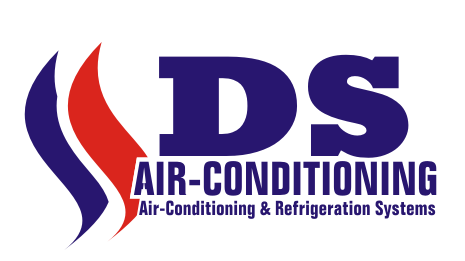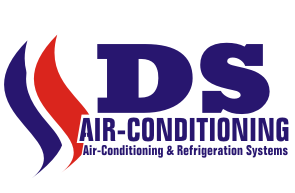
Air-Conditioning Articles (7)
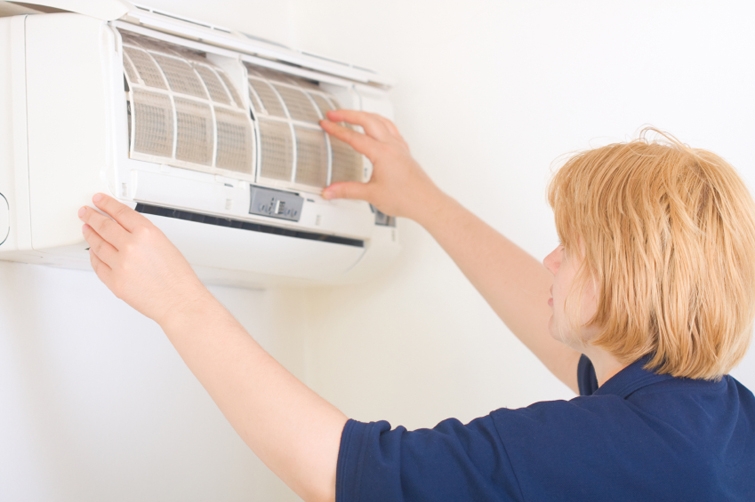
An air conditioner's filters, coils, and fins require regular maintenance for the unit to function effectively and efficiently throughout its years of service. Neglecting necessary maintenance ensures a steady decline in air conditioning performance while energy use steadily increases. Check out our Energy Saver 101 Infographic: Home Cooling for more ways to help improve your comfort and the efficiency of your air conditioner.
Air Conditioner Filters
The most important maintenance task that will ensure the efficiency of your air conditioner is to routinely replace or clean its filters. Clogged, dirty filters block normal airflow and reduce a system's efficiency significantly. With normal airflow obstructed, air that bypasses the filter may carry dirt directly into the evaporator coil and impair the coil's heat-absorbing capacity. Replacing a dirty, clogged filter with a clean one can lower your air conditioner's energy consumption by 5% to 15%.
For central air conditioners, filters are generally located somewhere along the return duct's length. Common filter locations are in walls, ceilings, furnaces, or in the air conditioner itself. Room air conditioners have a filter mounted in the grill that faces into the room.
Some types of filters are reusable; others must be replaced. They are available in a variety of types and efficiencies. Clean or replace your air conditioning system's filter or filters every month or two during the cooling season. Filters may need more frequent attention if the air conditioner is in constant use, is subjected to dusty conditions, or you have fur-bearing pets in the house.
Air Conditioner Coils
The air conditioner's evaporator coil and condenser coil collect dirt over their months and years of service. A clean filter prevents the evaporator coil from soiling quickly. In time, however, the evaporator coil will still collect dirt. This dirt reduces airflow and insulates the coil, reducing its ability to absorb heat. To avoid this problem, check your evaporator coil every year and clean it as necessary.
Outdoor condenser coils can also become very dirty if the outdoor environment is dusty or if there is foliage nearby. You can easily see the condenser coil and notice if dirt is collecting on its fins.
You should minimize dirt and debris near the condenser unit. Your dryer vents, falling leaves, and lawn mower are all potential sources of dirt and debris. Cleaning the area around the coil, removing any debris, and trimming foliage back at least 2 feet (0.6 meters) allow for adequate airflow around the condenser.
Coil Fins
The aluminum fins on evaporator and condenser coils are easily bent and can block airflow through the coil. Air conditioning wholesalers sell a tool called a "fin comb" that will comb these fins back into nearly original condition.
Condensate Drains
Occasionally pass a stiff wire through the unit's drain channels. Clogged drain channels prevent a unit from reducing humidity, and the resulting excess moisture may discolor walls or carpet.
Window Seals for Room Air Conditioners
At the start of each cooling season, inspect the seal between the air conditioner and the window frame to ensure it makes contact with the unit's metal case. Moisture can damage this seal, allowing cool air to escape from your house.
Preparing for Winter
In the winter, either cover your room air conditioner or remove and store it. Covering the outdoor unit of a central air conditioner will protect the unit from winter weather and debris.
Hiring a Professional
When your air conditioner needs more than regular maintenance, hire a professional service technician. A well-trained technician will find and fix problems in your air conditioning system.
The technician should:
- Check for correct amount of refrigerant
- Test for refrigerant leaks using a leak detector
- Capture any refrigerant that must be evacuated from the system, instead of illegally releasing it to the atmosphere
- Check for and seal duct leakage in central systems
- Measure airflow through the evaporator coil
- Verify the correct electric control sequence and make sure that the heating system and cooling system cannot operate simultaneously
- Inspect electric terminals, clean and tighten connections, and apply a non-conductive coating if necessary
- Oil motors and check belts for tightness and wear
- Check the accuracy of the thermostat.
Accra, Nov. 18, GNA – Refrigeration and Air Conditioning Engineers Association of Ghana (RAAG), has been formed to ensure high professionalism in the industry.
The Association aims to give voice to the industry, which has become dormant and neglected by government for so many years.
Speaking at the inauguration of the association recently in Accra, Reverend Father Joshua Annoh, President of RAAG, said the many quack engineers in the sector called for the formation of this Association to get rid of them.
He said the Association would seek to train its members to provide quality services to customers.
He said RAAG would serve as a platform for its members to come together to share ideas and experiences to help promote the industry.
Mr John Sewu, Secretary of the RAAG, said many people were ignorant about the important of the profession, hence its formation.
He said RAAG would put in place pragmatic measures to ensure that fake spare parts brought into the country to be used for servicing refrigerators and air conditioners become a thing of the past.
He called on government to ensure fairness in the award of public contracts by recognizing the important role of local contractors as well.
GNA
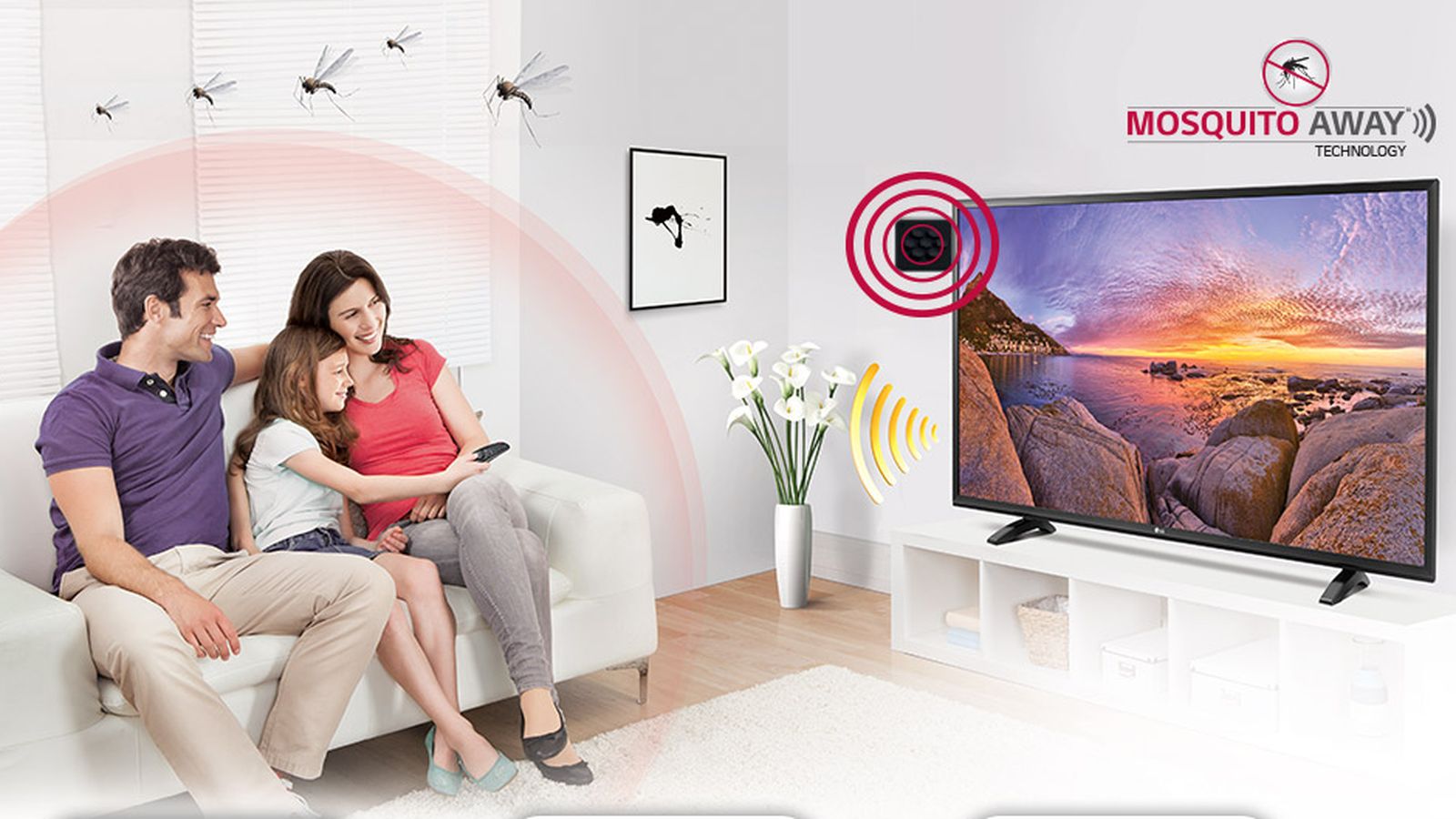
Securing oneself from the bite of mosquitoes and insects has been a major cause of worry to many ?Ghanaians as they continue to battle each day to free themselves from getting malaria by spending their hard earned money on drugs for prevention or cure, ?In a bid to remedy the situation, LG Electronics, and Somotex Ghana, global leaders in consumer Electronics appliances has introduced a new product called ‘Mosquito-Away Air Conditioner’ which seeks to drive away mosquitoes in homes and also enhance effective cooling system.
Speaking at the event in Accra at Holiday Inn to outdoor the new products, Vice President of Somotex Ghana Limited, Mr. Pranab Mohanty said “LG’s Mosquito Away has been built to withstand Ghana’s current stifling heat and humidity, delivering a powerful cooling performance and superior durability coupled with the ultrasonic wave technology which effectively repels mosquitoes and insects.
He maintained the Mosquito Away function on the air conditioner can be turned on independently of cooling, ?helping to prevent unnecessary energy usage however, when strong cooling is needed, the jet cool function and the product’s large, efficient fan deliver an increased volume of airflow.
?He noted due to the unstable power supply in Ghana for that matter ?Africa, LG has implemented the low voltage starter which enables affordably priced Mosquito-away device to operate continuously, ?even at lower voltage.
?Executive Director of Somotex Ghana Limited,Nii Ayi Hyde, disclosed the LG Mosquito-Away air conditioner is specifically and conveniently built for the Ghanaian and African market with Comprehensive Auto Cleaning function which prevents bacteria and mould from forming inside the heat exchanger and helps to create hygienic and odor-free atmosphere by the help of the Triple Filter which eliminates airborne chemical particles and unpleasant odors for a more pleasant ?indoor environment.
“with the introduction of the all new Mosquito Away Air conditioner,LG Electronics has once more demonstrated that it is dedicated to churning out ground-breaking products that addresses the peculiar needs of its many consumers”he added.
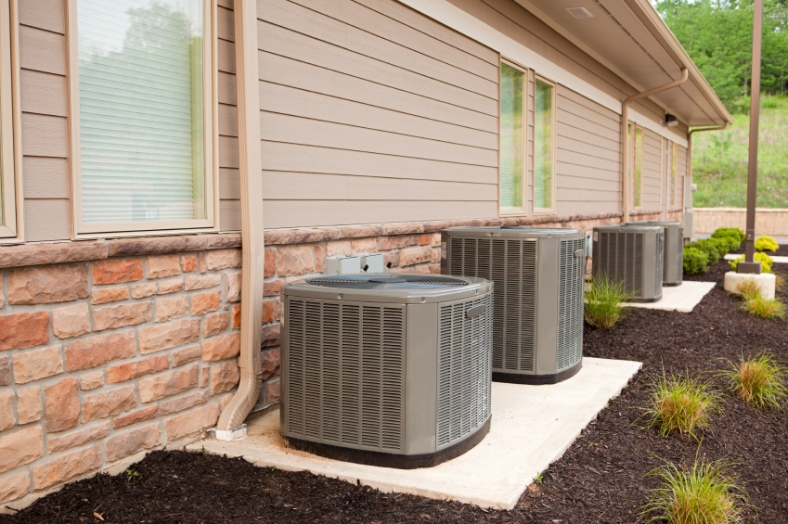
Central air conditioners circulate cool air through a system of supply and return ducts. Supply ducts and registers (i.e., openings in the walls, floors, or ceilings covered by grills) carry cooled air from the air conditioner to the home. This cooled air becomes warmer as it circulates through the home; then it flows back to the central air conditioner through return ducts and registers. To learn how central air conditioners compare to other cooling systems, check out our Energy Saver 101 Infographic: Home Cooling.
Air conditioners help to dehumidify the incoming air, but in extremely humid climates or in cases where the air conditioner is oversized, it may not achieve a low humidity. Running a dehumidifier in your air conditioned home will increase your energy use, both for the dehumidifier itself and because the air conditioner will require more energy to cool your house. A preferable alternative is a dehumidifying heat pipe, which can be added as a retrofit to most existing systems.
If you have a central air system in your home, set the fan to shut off at the same time as the compressor, which is usually done by setting the "auto" mode on the fan setting. In other words, don't use the system's central fan to provide air circulation -- use circulating fans in individual rooms.
Types of Central Air Conditioners
A central air conditioner is either a split-system unit or a packaged unit.
In a split-system central air conditioner, an outdoor metal cabinet contains the condenser and compressor, and an indoor cabinet contains the evaporator. In many split-system air conditioners, this indoor cabinet also contains a furnace or the indoor part of a heat pump. The air conditioner's evaporator coil is installed in the cabinet or main supply duct of this furnace or heat pump. If your home already has a furnace but no air conditioner, a split-system is the most economical central air conditioner to install.
In a packaged central air conditioner, the evaporator, condenser, and compressor are all located in one cabinet, which usually is placed on a roof or on a concrete slab next to the house's foundation. This type of air conditioner also is used in small commercial buildings. Air supply and return ducts come from indoors through the home's exterior wall or roof to connect with the packaged air conditioner, which is usually located outdoors. Packaged air conditioners often include electric heating coils or a natural gas furnace. This combination of air conditioner and central heater eliminates the need for a separate furnace indoors.
Types of Central Air Conditioners
Central air conditioners are more efficient than room air conditioners. In addition, they are out of the way, quiet, and convenient to operate. To save energy and money, you should try to buy an energy-efficient air conditioner and reduce your central air conditioner's energy use. In an average air-conditioned home, air conditioning consumes more than 2,000 kilowatt-hours of electricity per year, causing power plants to emit about 3,500 pounds of carbon dioxide and 31 pounds of sulfur dioxide.
If you are considering adding central air conditioning to your home, the deciding factor may be the need for ductwork.
If you have an older central air conditioner, you might choose to replace the outdoor compressor with a modern, high-efficiency unit. If you do so, consult a local heating and cooling contractor to assure that the new compressor is properly matched to the indoor unit. However, considering recent changes in refrigerants and air conditioning designs, it might be wiser to replace the entire system.
Today's best air conditioners use 30% to 50% less energy to produce the same amount of cooling as air conditioners made in the mid 1970s. Even if your air conditioner is only 10 years old, you may save 20% to 40% of your cooling energy costs by replacing it with a newer, more efficient model.
Proper sizing and installation are key elements in determining air conditioner efficiency. Too large a unit will not adequately remove humidity. Too small a unit will not be able to attain a comfortable temperature on the hottest days. Improper unit location, lack of insulation, and improper duct installation can greatly diminish efficiency.
When buying an air conditioner, look for a model with a high efficiency. Central air conditioners are rated according to their seasonal energy efficiency ratio (SEER). SEER indicates the relative amount of energy needed to provide a specific cooling output. Many older systems have SEER ratings of 6 or less.
If your air conditioner is old, consider buying an energy-efficient model. Look for the ENERGY STAR® and EnergyGuide labels -- qualified central units are about 15% more efficient than standard models. New residential central air conditioner standards went into effect on January 1, 2015; see the efficiency standards for central air conditioners for details, and consider purchasing a system with a higher SEER than the minimum for greater savings.
The standards do not require you to change your existing central air conditioning units, and replacement parts and services should still be available for your home's systems. The "lifespan" of a central air conditioner is about 15 to 20 years. Manufacturers typically continue to support existing equipment by making replacement parts available and honoring maintenance contracts after the new standard goes into effect.
Other features to look for when buying an air conditioner include:
- A thermal expansion valve and a high-temperature rating (EER) greater than 11.6, for high-efficiency operation when the weather is at its hottest
- A variable speed air handler for new ventilation systems
- A unit that operates quietly
- A fan-only switch, so you can use the unit for nighttime ventilation to substantially reduce air-conditioning costs
- A filter check light to remind you to check the filter after a predetermined number of operating hours
- An automatic-delay fan switch to turn off the fan a few minutes after the compressor turns off.
Installation and Location of Air Conditioners
If your air conditioner is installed correctly, or if major installation problems are found and fixed, it will perform efficiently for years with only minor routine maintenance. However, many air conditioners are not installed correctly. As an unfortunate result, modern energy-efficient air conditioners can perform almost as poorly as older inefficient models.
When installing a new central air conditioning system, be sure that your contractor:
- Allows adequate indoor space for the installation, maintenance, and repair of the new system, and installs an access door in the furnace or duct to provide a way to clean the evaporator coil
- Uses a duct-sizing methodology such as the Air Conditioning Contractors of America (ACCA) Manual D
- Ensures there are enough supply registers to deliver cool air and enough return air registers to carry warm house air back to the air conditioner
- Installs duct work within the conditioned space, not in the attic, wherever possible
- Seals all ducts with duct mastic and heavily insulates attic ducts
- Locates the condensing unit where its noise will not keep you or your neighbors awake at night, if possible
- Locates the condensing unit where no nearby objects will block airflow to it
- Verifies that the newly installed air conditioner has the exact refrigerant charge and airflow rate specified by the manufacturer
- Locates the thermostat away from heat sources, such as windows or supply registers.
If you are replacing an older or failed split system, be sure that the evaporator coil is replaced with a new one that exactly matches the condenser coil in the new condensing unit. (The air conditioner's efficiency will likely not improve if the existing evaporator coil is left in place; in fact, the old coil could cause the new compressor to fail prematurely.)
Here’s an easy, doable preventative maintenance checklist to keep your heating and cooling system in top shape.
It’s a good idea to hire an HVAC company to inspect and do maintenance on your system every fall and spring. They’ll do things like inspect and clean the wiring and mechanisms of the unit, which is bit more challenging for the average homeowner.
But you can prolong the life and increase the efficiency of your system if you follow this simple maintenance plan:
Some things you should do immediately; other tasks only need to be done seasonally or once a year.
Steps to a Healthy HVAC System
Buy a better filter if you haven’t already. The new high-efficiency pleated filters have an electrostatic charge that works like a magnet to grab the tiniest particles — even those that carry bacteria.
Replace the filter at least every 90 days. But check it monthly. If it looks dark and clogged, go ahead and change it. If you have pets, you’ll probably need to change every month.
Make sure there’s at least two feet of clearance around outdoor air conditioning units and heat pumps.
Remove debris, such as leaves, pollen, and twigs weekly during spring, summer, and fall from top and sides of outdoor air-conditioning units and heat pumps. Don’t allow the lawn mower to discharge grass clippings onto the unit.
Monthly, inspect insulation on refrigerant lines leading into house. Replace if missing or damaged.
Make sure unit is level. Annually, ensure that outdoor air-conditioning units and heat pumps are on firm and level ground or pads.
Stave off clogs. Annually, pour a cup of bleach mixed with water down the air-conditioner condensate drain to prevent buildup of mold and algae, which can cause a clog.
Shut off the water supply to the furnace humidifier in summer. In fall (or when you anticipate turning on the heat), replace the humidifier wick filter, set the humidistat to between 35% and 40% relative humidity, and turn on the water supply.
Never close more than 20% of a home’s registers to avoid placing unnecessary strain on the HVAC system.
Replace the battery in your home’s carbon monoxide detector annually.
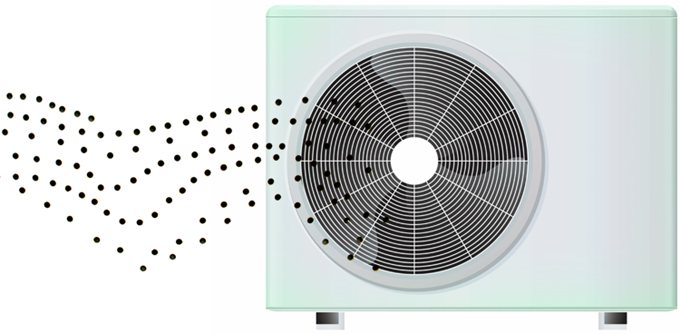
As summer approaches, bringing with it soaring temperatures and unbearable humidity, millions of people will turn on that marvel of discovery and invention – the air conditioner.
These comfort units that homeowners activate with the ease of flipping a switch are complex electromechanical systems, the end products of nearly a century of engineering development in cooling, thermodynamics, controls, and energy efficiency. In 2000, air conditioning/refrigeration was named among the 10 greatest mechanical engineering achievements of the 20th century, according to a survey of ASME members.
Air conditioning actually has roots in second century China, where an inventor named Ding Huane crafted a manually powered rotary fan. The concept of air cooling also intrigued the great American inventor and statesman Benjamin Franklin, who in 1758 conducted experiments with evaporation and alcohol to attain freezing temperatures.
Willis Carrier: The Father of the Air Conditioner
The first modern air conditioner was invented in 1902 by Willis Haviland Carrier, a skilled engineer who began experimenting with the laws of humidity control to solve an application problem at a printing plant in Brooklyn, NY. Borrowing from the concepts of mechanical refrigeration established in earlier years, Carrier’s system sent air through coils filled with cold water, cooling the air while at the same time removing moisture to control room humidity. In 1933, the Carrier Air Conditioning Company of America developed an air conditioner using a belt-driven condensing unit and associated blower, mechanical controls, and evaporator coil, and this device became the model in the growing U.S. marketplace for air-cooling systems.

Today’s air conditioners, while operating on the same fundamental science as Carrier’s 1933 system, incorporate advancements in vapor compression, diagnostics and controls, electronic sensors, materials, and energy efficiency. Carrier’s new top-of-the line central air conditioner, the Infinity, is far different than the founder’s early models, featuring advanced components including a two-stage scroll compressor for quieter, more energy-efficient performance.

To comply with the regulations, air-conditioning manufacturers have successfully increased the Seasonal Energy Efficiency Ratio (SEER) to 16 or 18, exceeding the DOE’s efficiency standards. Some high-end models like the Lennox XC21 and Trane XL20i, in addition to the Infinity, are rated up to 21 SEER, further aiding the environment while enabling energy cost savings for customers.
Smart Technologies
In a further effort to reduce energy usage, some air-conditioning manufacturers have begun to stretch the capabilities of the standard wall thermostat, developing sophisticated microprocessor-based diagnostic and control kits that automate the operation of the compressor and air-flow system. The Trane ComfortLink II remote thermostat allows the homeowner to adjust functions and settings on the air conditioner from off-site computers and web-enabled cell phones; ComfortLink will even send text and e-mail alerts on when to replace the filter or arrange routine service inspections.
“We are using innovation to put a whole new level of control in the consumer’s hands, in the process reducing home energy consumption,” explains Thoren, a longtime ASME member. He says Trane views the air conditioner as one component in the automated, energy-efficient home of the future.
In the next wave of technology development, Ingersoll Rand and other manufacturers will advance smart technologies to interface their systems with the national electric grid, allowing units to be regulated according to geography and changing weather conditions. Grid interoperability could push air-conditioning research down the pathway of fully variable speed systems, further reducing energy consumption.
Today, some 80% of American households have air conditioners, mostly central systems, according to the Energy Information Administration. Air conditioning has grown from a luxury to a necessity and contributed in many ways to the quality of life in America and the industrialized world. In addition to the obvious benefits and enjoyments of comfort cooling, the air conditioner altered architectural design, allowing windowless office buildings and houses without porches. Air conditioning also played a major role in migration patterns and economic development in the U.S., allowing millions of people to live and work and establish businesses in locations known for their hot and steamy climates.
Energy efficiency standards set by the U.S. Department of Energy are driving improvements in air-conditioning systems. “Minimum efficiency standards for a/c systems have progressively increased, particularly in the last five years, requiring manufacturers to optimize systems to reduce energy consumption,” says Dennis Thoren, vice president of engineering and technology at Ingersoll Rand, Davidson, NC, which markets the popular Trane line of air conditioners.
7 Ways to Save On Air Conditioning Running Costs

For several scorching days in June, the Valley of the Sun has some of the highest temperatures on record anywhere in the world. Weather experts note that this is likely due to atmospheric trends which will also raise temperatures across the country.
As the temperatures rise, so will your AC bill, but there are some ways you can save money on AC. Use these simple tips!
Tips On How to Save Money On A/C
#1 Plants
Plants and trees are a great way to keep the sun’s light and heat from ever entering your home. Plant more shrubs and trees around your house to keep it cool, and improve curb appeal!
#2 Blinds
When you close your blinds and curtains you keep heat from coming into your home, as well. You can also choose to add outdoor awnings or shade screens on the outside of your home to battle that sun.
#3 Turn up the thermostat
For every degree that you set your thermostat above 78 you can reduce your AC bills by 10%. Installing a programmable thermostat can keep the temperature set higher during the day, while you’re at work, and lower it to a comfortable setting before you get home.
#4 Change your air filters regularly
It’s crucial to maintain your AC system in order to keep it up and running correctly. Dirty air filters restrict air flow and cause the system to use more electricity. Remember to change your air filters monthly or switch to a reusable air filter. These are more costly up front, but can save you money in the long run.
